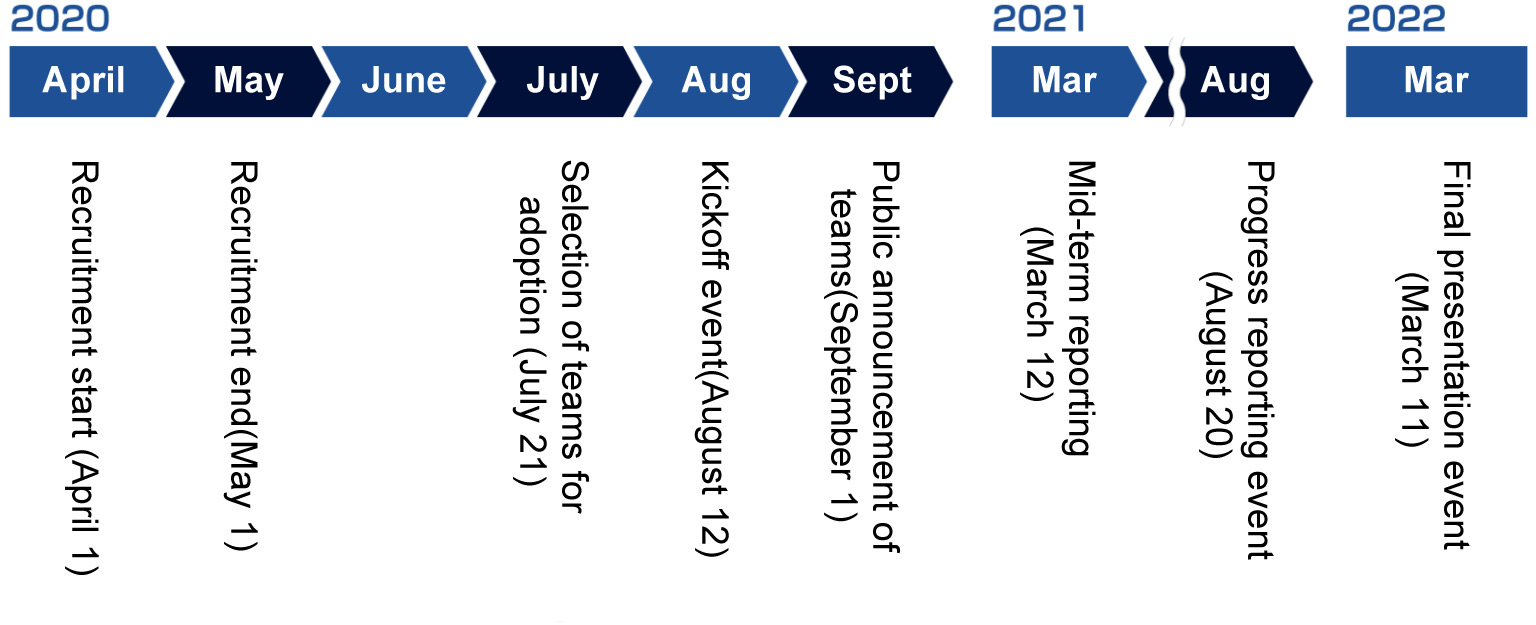- TOP
- Project Outline
Project Outline
DeSET started in April 2017 through the collaboration of The Nippon Foundation, The Japan Advanced Science and Technology Organization for Education, Human Development and Research, and Leave a Nest Co., Ltd. The ultimate goal of this project is to create a seafloor topographic map with a resolution of 100 m or less in the XY axis direction of the Earth’s entire sea area, and also aims to create a technology from Japan that can dramatically accelerate the realization of the aforementioned goal.
In order for effective technological innovation to take place, we believe that not only cutting-edge technology, but also various fields and players should be involved: simple and low-cost structural ideas, new m
Provided Support
DeSET provides the following support for teams who have been chosen:
- Financial support for expenses related to the development of technology
- Outsourcing of a project manager in charge of business feasibility, consideration of external financing, finding of business partners, and acquisition of patents, etc.
- Usage of any of the following as meeting locations: Leave a Nest Co., Ltd., offices (Tokyo, Osaka, Kumamoto, Okinawa), and the “Center of Garage” (Leave a Nest Monodzukuri Incubation Center)
Schedule for DeSET 2020

What has happened until DeSET 2020?

Initiatives of teams in 2018
In addition to the technology development team formed in 2017, the second open call for participants will be held in 2018. A little less than 60 researchers, engineers, and entrepreneurs with various specialties, occupations, and ideas are gathered. Three teams were adopted by forming teams through training camps to create new technical concepts that go beyond existing common sense and the extension of current technology. Technology development was carried out assuming connection with overseas toward 100% seafloor topographic map in 2030.
Initiatives of teams in 2017
It was launched in 2017 as a project to subsidize research and development for 50 million yen to a technology development team that can dramatically improve the efficiency of seafloor topographic map creation. 14 elemental technology proposals were received from all over the country, and a team formation camp was held with 23 people across fields and organizations such as public research institutes, venture companies, small and medium-sized enterprises, and large enterprises. Three teams have been adopted to develop the technology to realize the refinement.



